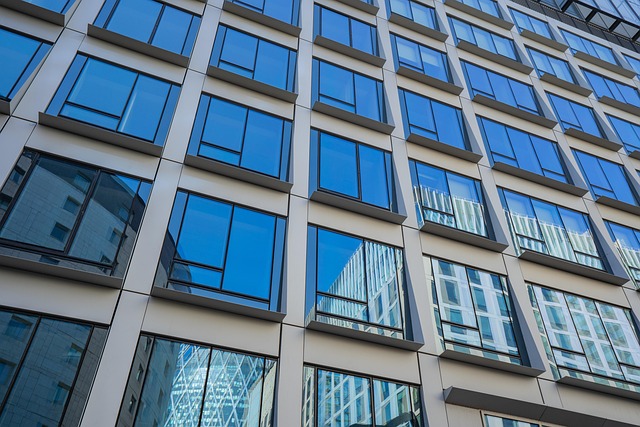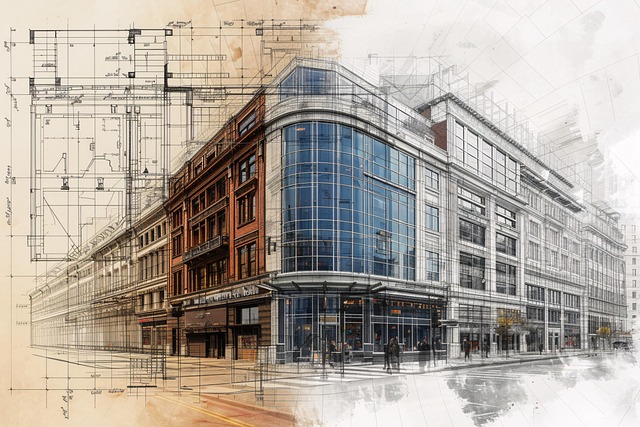Commercial gas hot water heaters, particularly tankless and condensing models, offer efficient, on-demand heating for institutional settings. Their compact design and high capacity make them suitable for cramped mechanical rooms, while advanced technology reduces energy costs and environmental impact. Strict safety measures, adherence to regulations, and strategic placement ensure seamless integration and optimal performance in tight commercial spaces.
In tight mechanical rooms, installing a compact commercial gas hot water heater requires meticulous planning. This article explores the unique considerations and best practices for fitting these space-saving units while adhering to safety standards and regulations. From understanding specific commercial gas hot water heater requirements to optimizing space through strategic placement and configuration, this guide offers essential insights for successful installations in constrained environments.
- Understanding Commercial Gas Hot Water Heater Requirements
- Fitting Considerations for Tight Mechanical Rooms
- Essential Safety Measures and Regulations
- Optimizing Space: Placement and Configuration Techniques
Understanding Commercial Gas Hot Water Heater Requirements

When it comes to commercial spaces like restaurants and hotels, understanding the specific needs for hot water is crucial. Commercial gas hot water heaters play a vital role in ensuring efficient and reliable water heating, catering to high-demand institutions. These systems often need to deliver large volumes of hot water quickly, making energy efficiency and performance key considerations.
Institutional settings require robust commercial hot water systems capable of handling substantial thermal loads. Gas fired heating offers a fast and effective solution, especially in tankless gas systems which provide on-demand hot water without the need for storage tanks. This reduces energy wastage associated with maintaining hot water at a constant temperature. Advanced condensing technology further enhances energy efficiency, recovering heat from exhaust gases to preheat incoming cold water, thereby minimizing environmental impact and operating costs.
Fitting Considerations for Tight Mechanical Rooms

Fitting commercial gas hot water heaters in tight mechanical rooms requires careful planning and consideration. Since space is limited, compact models designed specifically for institutional systems are essential. These efficient devices offer high capacity water heating with minimal footprint, making them ideal for restaurants, hotels, and other commercial establishments facing space constraints.
When selecting a suitable unit, focus on energy-efficient gas fired heating options that incorporate condensing technology. This not only reduces energy consumption but also minimizes environmental impact. Tankless gas systems, for instance, eliminate the need for storage tanks, saving valuable room while providing consistent hot water supply for demanding applications like hotel water heating. Ensure proper ventilation and consider specialized installation techniques to seamlessly integrate these compact commercial hot water systems into your tight mechanical room layout.
Essential Safety Measures and Regulations

When installing a commercial gas hot water heater, especially in tight mechanical rooms, it’s paramount to prioritize safety measures and adhere to relevant regulations. All gas piping and connections must be meticulously executed to prevent leaks and ensure proper ventilation, safeguarding against potential explosions and asphyxiation hazards. Institution-specific codes and industry standards, such as those set by the American Society of Mechanical Engineers (ASME), should guide installation practices for commercial hot water systems, including high capacity water heaters, tankless gas systems, and storage tank heaters. These guidelines encompass requirements for materials, construction, testing, and certification to ensure safe gas fired heating in confined spaces like hotels, restaurants, and institutional facilities.
Additionally, incorporating energy efficient heating technologies, such as condensing technology, can help optimize performance while minimizing environmental impact. These advancements capture residual heat from the exhaust gas stream, boosting overall system efficiency and reducing utility costs for commercial hot water systems. By combining robust safety protocols with cutting-edge energy efficiency solutions, businesses can maintain reliable and safe water heating while contributing to a more sustainable future.
Optimizing Space: Placement and Configuration Techniques

In compact mechanical rooms, optimizing space for a commercial gas hot water heater requires strategic placement and configuration techniques. One effective method is to utilize wall-mounted or inline installations, which reduce floor space requirements compared to traditional floor models. Additionally, placing the heater in close proximity to points of use, such as restaurants, hotels, or institutional kitchens, minimizes piping lengths, thereby conserving valuable room real estate.
For maximum efficiency, consider arranging high-capacity water heaters in parallel or series configurations depending on the hot water demand and flow rates. Integrating condensing technology into these systems can further enhance energy efficiency, as it recovers heat from exhaust gases, boosting gas fired heating performance and reducing overall energy consumption. This approach ensures efficient water heating for institutional systems while fitting seamlessly within tight mechanical room constraints.
When it comes to installing compact commercial gas hot water heaters in tight mechanical rooms, careful consideration of space optimization, safety regulations, and efficient fitting techniques are paramount. By understanding the unique requirements of these heaters and navigating the challenges posed by confined spaces, professionals can ensure safe, reliable, and energy-efficient hot water provision for commercial establishments. Prioritizing safety measures and adhering to regulations guarantees a robust and compliant system, while innovative placement and configuration strategies maximize limited room capacity. Thus, with the right approach, it’s possible to accommodate these compact heaters effectively, enhancing both performance and space utilization in even the tightest mechanical rooms.
